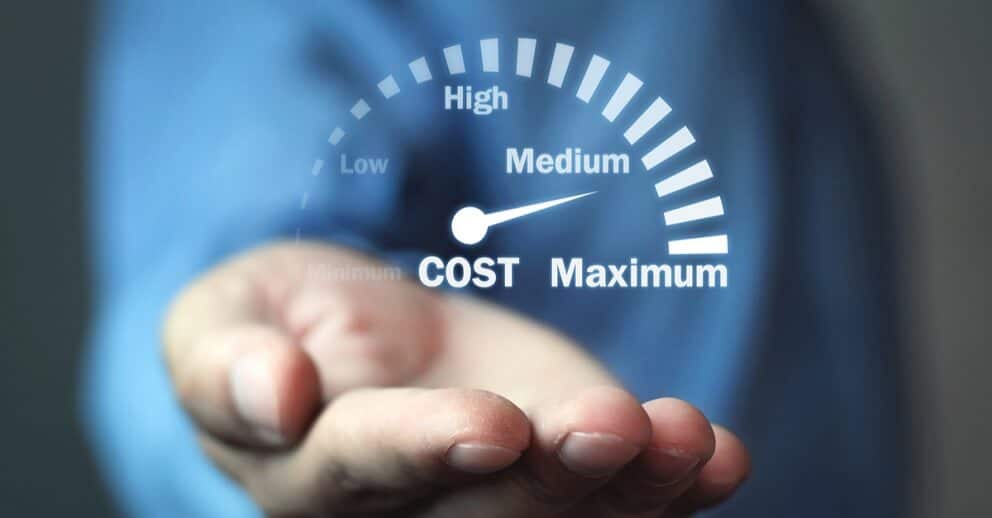Calculating the True Cost of Chargebacks

Chargebacks are an expensive nuisance for merchants. On average, merchant chargeback costs are 2.5X the transaction cost. These figures alone are enough to drive merchants to implement steps towards chargeback prevention, but they are not a true representation of what a chargeback costs your business.

Aside from direct costs, including transaction amount, chargeback fees, and operational costs, some difficult to quantify indirect costs can have lasting effects and should be factored in when calculating the true cost of merchant chargebacks.
Direct costs
The main goal of a business is to make a profit. As such, merchants quickly pick up on chargeback costs that differently impact their bottom-line.
-
Lost revenue
At its core, a chargeback is returning payment to a cardholder from a merchant. This directly translates into lost revenue. Merchants can decide to fight the chargeback if they think it’s illegitimate. If they manage to prove this, they’ll recover their lost revenue.
-
Value of lost merchandise
Whether in cases of true fraud or friendly fraud, the actual recipient of the service or product typically does not return the purchased item after a payment dispute is opened. When the cardholder wins the chargeback claim, the merchant incurs both chargeback costs and loss of the merchandise.

-
Credit card processing fees
Merchants pay credit card processors a fee for every transaction processed. The fee includes the wholesale cost of the transaction and the processor’s markup. When the transaction is charged back - even when the merchant wins the chargeback – the processing fee is lost.
-
Chargeback fees
The acquiring bank handles the chargeback process for the merchant at a cost ranging between $15 and $100. The chargeback fees vary depending on the acquirer and the merchant’s chargeback ratio.
If a merchant opts to fight a chargeback dispute and wins, they will recoup lost revenue. However, the acquiring bank often doesn’t refund chargeback fees.
-
Operational costs
Aside from chargeback fees, merchants also lose out on operational costs associated with the transaction. Examples of operational costs include:
- The time spent processing and shipping the order
- The costs of managing and storing inventory
- Shipping costs attached to each order
- Cost of software solutions to identify and manage fraud
These costs often add up to 20% of revenue lost to a chargeback.
-
Marketing costs
Sales rarely happen all by themselves. Most merchants invest a lot of money into advertising and marketing to reel in a sale. Marketing budgets are often 30-40% of business revenue. This money is wasted when a sale results in a chargeback.
Indirect costs
Brand management and reputation monitoring are key components of running a successful business in this digital age. The internet has given consumers numerous ways to express their dissatisfaction with products and services, including reviews and ratings. An unsatisfied customer who files for a chargeback may post a negative review on Google or social media.

Chargebacks happen for various reasons, some legitimate and some fraudulent. Legitimate chargebacks can trigger customer dissatisfaction. It might result from merchant error, a product not matching its description, a defective product, currency and billing issues, and delays in payment, service or delivery. These errors are a merchant’s fault and can affect the business negatively.
A lot of chargebacks can be a sign something is wrong within the business. And if left unattended, these flaws might erode the reputation of your business, which hurt your customer retention and lifetime revenue. In addition to this, lots of chargebacks attract higher chargeback fees and might result in account closure.
How merchants can avoid these costs
Chargeback management features several facets. However, the most valuable step for reducing these costs is merchant chargeback prevention. After all, an ounce of prevention is worth a pound of cure.
Effective prevention programs include several aspects customized to meet the needs of different businesses. Some important parts include:
- Chargeback alerts
- Fraud detection
- Affiliate monitoring
- Emphasizing customer service
- Dispute resolution tools
Using Justt for merchant chargeback prevention
Getting some chargebacks is inevitable. It’s part and parcel of running a business. However, implementing an effective chargeback mitigation program helps to reduce vulnerability to chargebacks and reduce the true cost of chargebacks.
For merchants who need help understanding the cause of their chargebacks and how they can best fight them, Justt offers a chargeback mitigation solution that works. Charging only a success-based fee, Justt is guaranteed to help your bottom line and reduce the losses you face due to chargebacks.
Contact us to find out more






